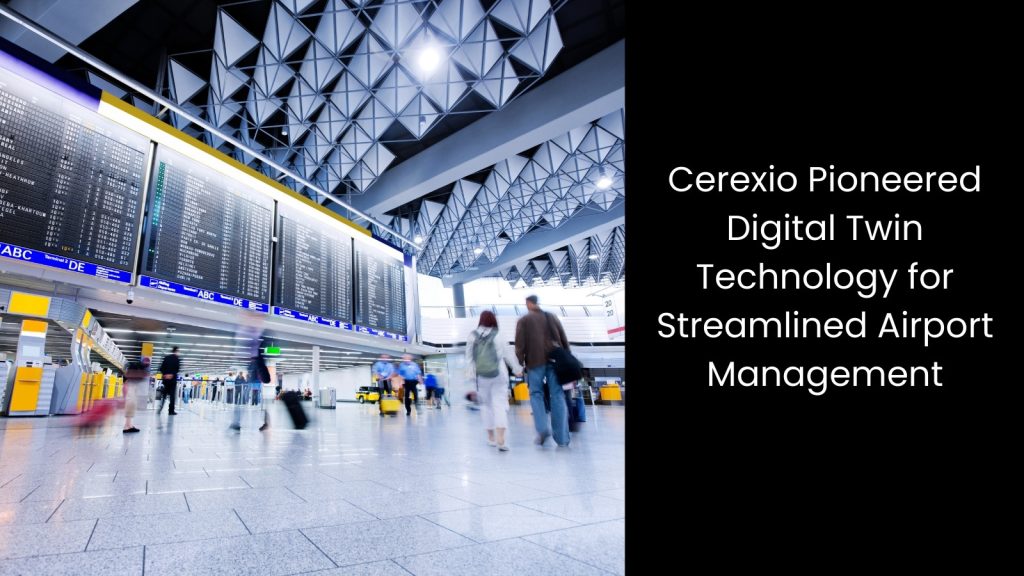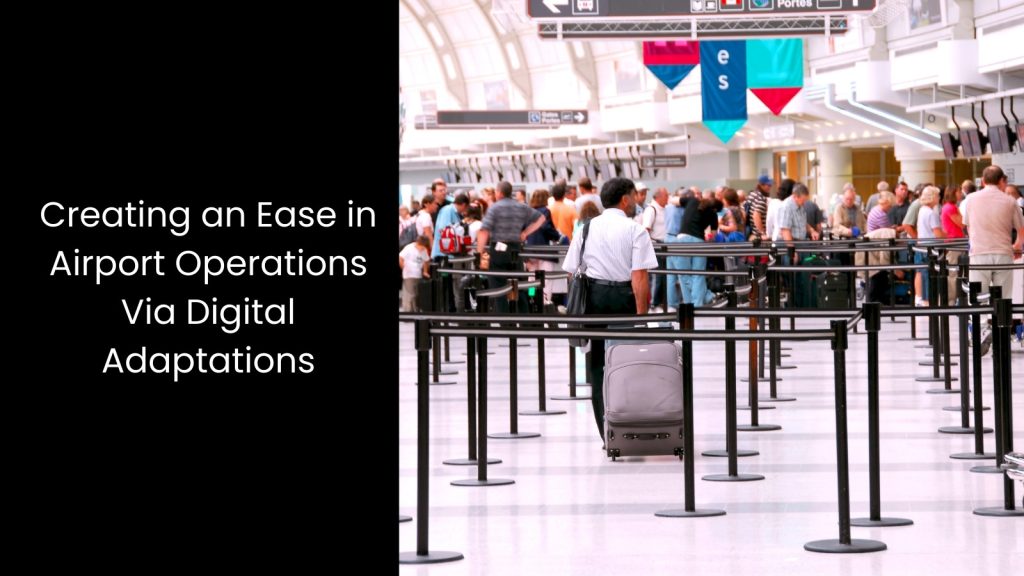This article will discover everything about the ways that Digital Twin technology can streamline airport operations in Singapore.
We will know
- Understanding the Power of the Digital Twin
- This is How Singapore Changi Airport Functions
- Key Ways Digital Twin Streamlines Airport Services in Singapore
4.Cerexio Pioneered Digital Twin Technology for Streamlined Airport Management
5. Creating an Ease in Airport Operations Via Digital Adaptations
Understanding the Power of the Digital Twin

- This certain technology can create a virtual representation of a physical object or system, accurately reflecting its real-world counterpart. As it utilises real-time data, this virtual model continuously updates to mirror the physical object’s current condition and historical performance.
- However, Digital Twin cannot do this alone. By combining simulation, machine learning, and reasoning, Digital Twin enables decision-making that enhances product performance and process efficiency.
- The use of IoT sensors also plays a crucial role here. It transfers real-world data to create these virtual models, which become powerful tools in modern engineering.
- All together, with Digital Twin, it is one world of data under one virtual platform.
This is How Singapore Changi Airport Functions

- Singapore Changi Airport operates as one of the largest and most important transportation centres in Asia, serving as a key gateway for travellers worldwide. According to the reports, the airport accommodates over 100 airlines that connect Singapore to more than 400 cities across approximately 100 countries and territories.
- With around 7,400 flights arriving or departing each week, Changi Airport manages around one flight every 80 seconds.
- Changi Airport’s infrastructure includes four main passenger terminals. These are strategically arranged in an elongated, inverted ‘U’ shape, with the iconic jewel at its centre. Each terminal serves distinct functions and geographical locations, with Terminal 1 positioned at the northern end, Terminal 2 on the eastern side, Terminal 3 on the western end, and Terminal 4 on the southern side.
- These terminals collectively offer a designed total annual handling capacity of 85 million passengers. The latter highlights Changi’s ability to efficiently manage large volumes of international travellers.
- This proves that in order to make each operation successful, Changi airport requires robust technologies like Digital Twin.
Key Ways Digital Twin Streamlines Airport Services in Singapore

Efficient Flight Management
Since this can create a virtual replica of the airport’s operations, Digital Twin allows airport authorities to optimise flight schedules and gate assignments, ensuring smooth and timely management of arrivals and departures.
The technology simulates different scenarios and outcomes, helping to identify the most efficient allocation of gates, runways, and other critical resources. For instance, if multiple flights arrive simultaneously, the Digital Twin can quickly analyse potential congestion points and suggest alternative gate assignments or adjusted schedules to prevent delays. This real-time simulation capability is what will help Changi Airport adapt swiftly to changing conditions, such as weather disruptions or unexpected delays. This will certainly minimise the impact on passengers and overall airport operations.
Digital Twin technology also facilitates better coordination between various departments within the airport, such as air traffic control, ground services, and airline operations, by providing a unified, real-time view of flight activities. This strategic approach helps to anticipate and resolve potential bottlenecks before they escalate into larger issues.
It also helps with predictions of certain factors. This ability not only improves current operations but also aids in long-term planning, ensuring that Changi Airport remains prepared to handle future increases in passenger traffic.
Enhancing Singapore Changi Airport Skytrain Operations
It can create a real-time virtual model of the Skytrain system beyond doubt. This way, Digital Twin enables efficient monitoring and management of all aspects of its operation.
The Skytrain, which has used Crystal Movers on all lines, consists of two independent systems: the airside-only PMS/South and the PMS/North that operate on both landside and airside. The Digital Twin helps optimise these systems by simulating different operational scenarios, allowing for better management of train schedules, and reducing wait times for passengers.
Using this, authorities can monitor the performance of platform screen doors, air-conditioning systems, and plasma displays at each station. It will ensure they operate efficiently and provide timely updates on train arrivals.
Also, the main operation control centre located near A-South Station and the standby satellite control centre in Terminal 3 can use the Digital Twin model to oversee the entire Skytrain system. This will quickly identify and resolve any issues that arise. This capability ensures that even if one control centre faces a problem, the other can seamlessly take over, maintaining uninterrupted service.
Enhanced Security Measures
It is a certain fact that this advanced technology backs up airport authorities to model and analyse the complex interactions between various security systems and the flow of passengers through different areas of the airport. Since it simulates these processes, Digital Twin can identify potential vulnerabilities that might not be immediately apparent in real-world operations.
Let us walk you through an example. This specific technology can detect weak points in surveillance coverage or bottlenecks where passenger congestion could increase the risk of security breaches. With this information, airport security teams can optimise protocols and make adjustments to ensure that all areas are adequately monitored and that passenger flow is managed efficiently to prevent overcrowding, which could lead to safety risks.
The Digital Twin also allows for the continuous monitoring of security systems, ensuring that they operate at peak efficiency. For example, if a security camera malfunctions or a biometric scanner experiences a technical issue, the Digital Twin can immediately alert the relevant authorities, enabling rapid response and minimising the potential impact on airport operations.
This is how Digital Twin technology has the strength to empower Changi Airport to maintain robust security measures, providing passengers with a safe and secure travel experience at the same time.
Enhanced Passenger Flow Management and Airport Operations
For example, if a particular security checkpoint becomes crowded, Digital Twin can quickly suggest alternative routes or open additional lanes to alleviate the pressure. This dynamic adjustment capability reduces wait times and enhances overall efficiency.
On the other hand, if the baggage handling system or a system similar to this encounters delays, the Digital Twin can pinpoint the cause, whether it is a technical issue or an operational bottleneck, and propose solutions to resolve it swiftly. This way, Digital Twin establishes itself as a potent weapon in handling airport operations in Singapore.
Cerexio Pioneered Digital Twin Technology for Streamlined Airport Management

Cerexio pioneered Digital Twin technology and simulation platforms offers the ultimate solution for streamlined airport management. This cutting-edge software provides real-time, virtual models of airport operations, supporting precise monitoring, simulation, and optimisation of every aspect, from passenger terminals to cargo handling.
Creating an Ease in Airport Operations Via Digital Adaptations

As airports increasingly adopt various technological solutions to streamline their operations, Digital Twin technology offers unprecedented levels of efficiency and reliability in the aviation industry. These digital adaptations not only streamline operations but also elevate the overall passenger experience, showing a new era of innovation in airport management.

